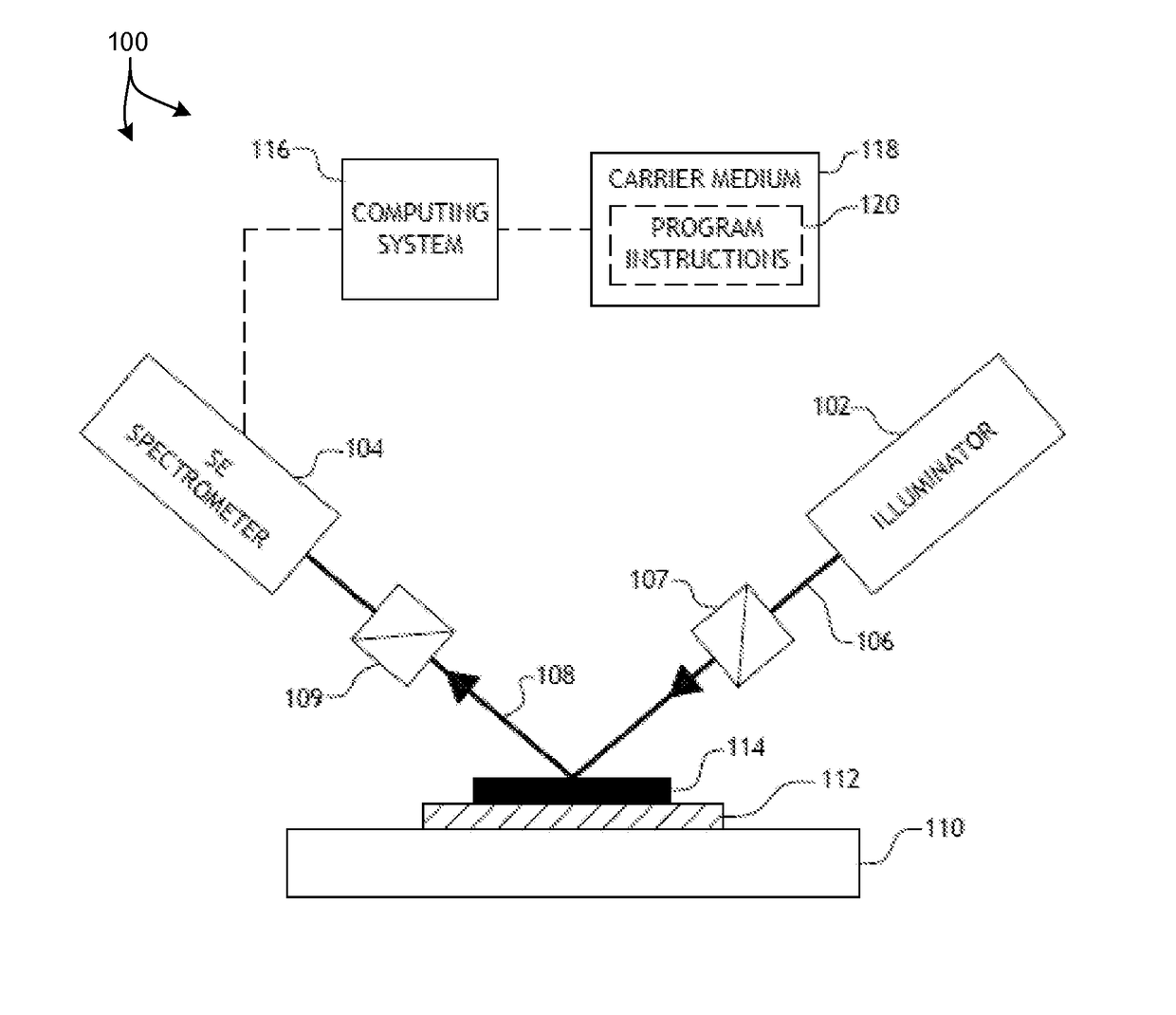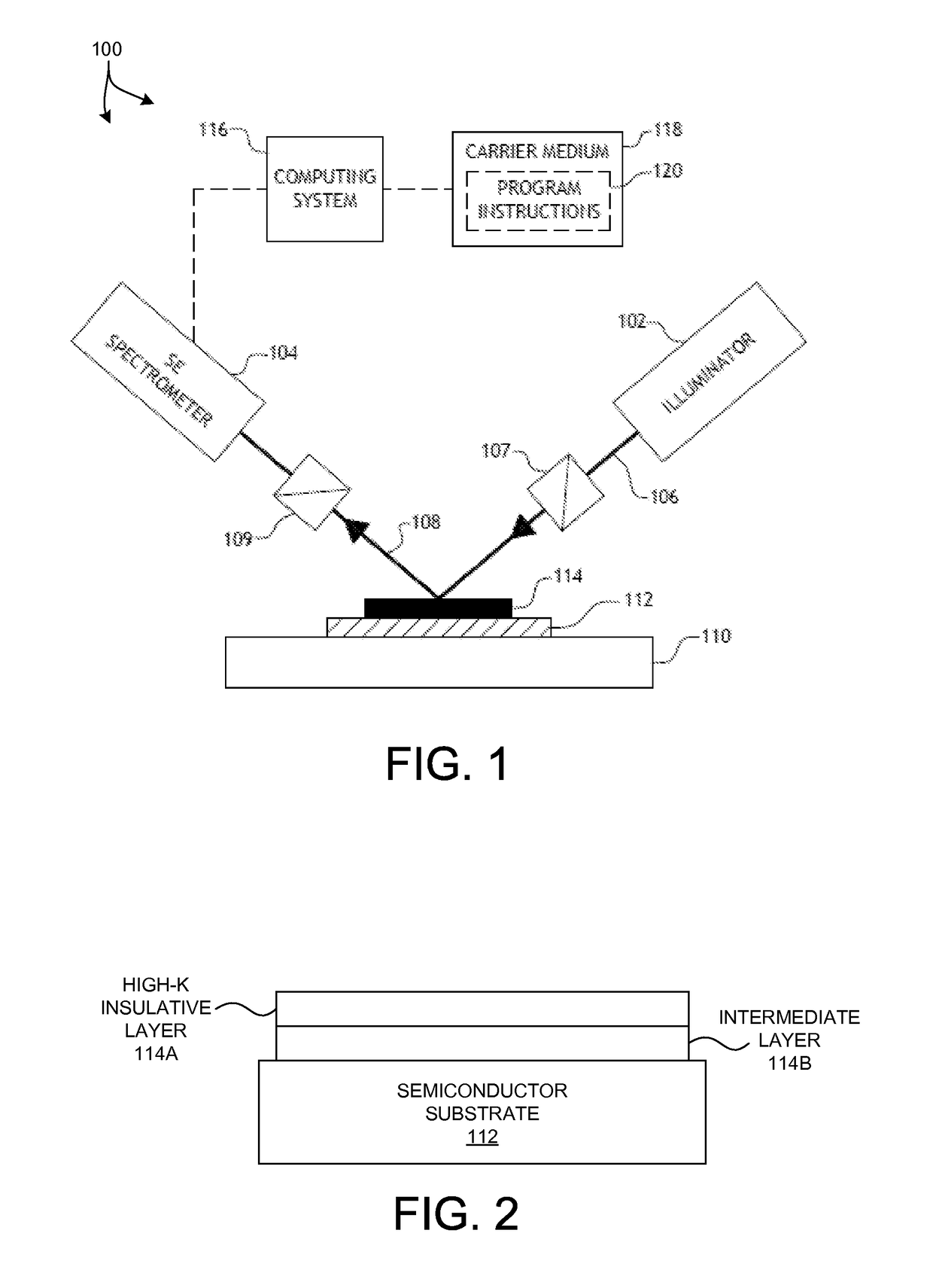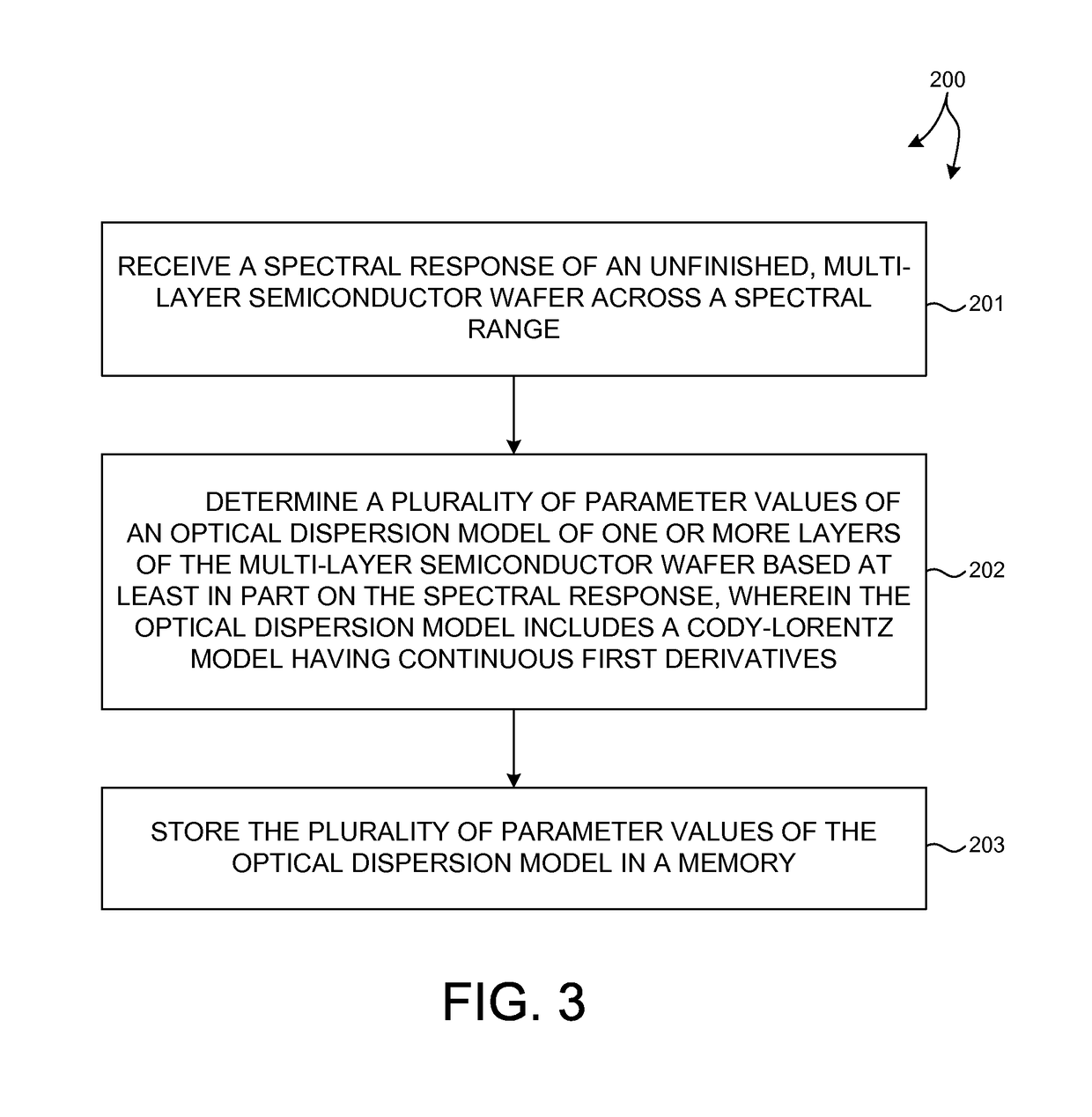Dispersion model for band gap tracking
a dispersion model and band gap technology, applied in the direction of individual semiconductor device testing, semiconductor/solid-state device testing/measurement, instruments, etc., can solve the problems of measurement technology suffering from any of a number of limitations, measurement requires the destruction of samples, measurement accuracy is not high, etc., to achieve accurate characterization of band gaps and gain insight and control over a manufacturing process.
- Summary
- Abstract
- Description
- Claims
- Application Information
AI Technical Summary
Benefits of technology
Problems solved by technology
Method used
Image
Examples
Embodiment Construction
[0028]Reference will now be made in detail to background examples and some embodiments of the invention, examples of which are illustrated in the accompanying drawings.
[0029]Optical models of semiconductor structures such as gate dielectric stacks are presented. In particular, models capable of accurate characterization of band structure characteristics in high-K dielectric layers and nanostructures based on high-K dielectric materials are presented. These models quickly and accurately represent experimental results in a physically meaningful manner that can be subsequently used to gain insight and control over a manufacturing process.
[0030]FIG. 1 illustrates a system 100 for measuring a spectral response of a thin film of a semiconductor wafer, in accordance with one embodiment of the present invention. As shown in FIG. 1, the system 100 may be used to perform spectroscopic ellipsometry on one or more films 114 of a semiconductor wafer 112 disposed on a translation stage 110. In th...
PUM
| Property | Measurement | Unit |
|---|---|---|
| wavelength range | aaaaa | aaaaa |
| optical dispersion model | aaaaa | aaaaa |
| dielectric function | aaaaa | aaaaa |
Abstract
Description
Claims
Application Information
 Login to View More
Login to View More - R&D
- Intellectual Property
- Life Sciences
- Materials
- Tech Scout
- Unparalleled Data Quality
- Higher Quality Content
- 60% Fewer Hallucinations
Browse by: Latest US Patents, China's latest patents, Technical Efficacy Thesaurus, Application Domain, Technology Topic, Popular Technical Reports.
© 2025 PatSnap. All rights reserved.Legal|Privacy policy|Modern Slavery Act Transparency Statement|Sitemap|About US| Contact US: help@patsnap.com



